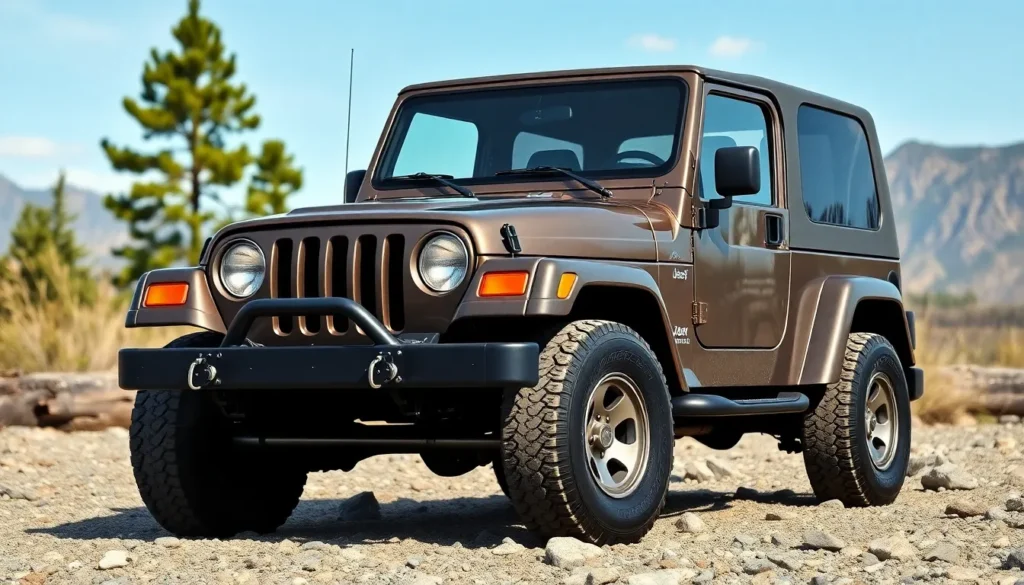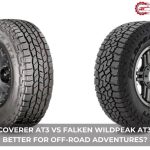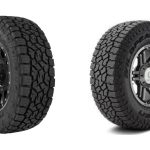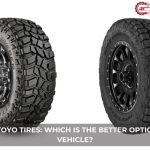The Jeep Wrangler TJ represents one of the most beloved generations in off-road history. From 1997 to 2006, this iconic SUV captured hearts with its perfect blend of rugged capability and everyday practicality. We’ve seen countless TJ owners transform their rigs into trail-conquering beasts while still using them for daily commutes.
What makes the TJ special isn’t just its legendary 4×4 performance – it’s the incredible modification potential and rock-solid reliability that’s kept these vehicles thriving decades after production ended. Whether you’re eyeing your first TJ or you’re a seasoned owner looking to maximize your investment, understanding this generation’s unique characteristics is crucial.
We’ll dive deep into everything that makes the TJ tick, from engine options and common issues to the modifications that’ll take your off-road adventures to the next level. Get ready to discover why the TJ continues to dominate trails and hold its value better than almost any other SUV.
Jeep Wrangler TJ Overview and History
The Jeep Wrangler TJ represents the second generation of the modern Wrangler lineup, manufactured from 1997 through 2006. This generation marked a important evolution from its YJ predecessor by reintroducing the iconic round headlights that defined classic Jeep design. Chrysler Corporation developed the TJ as a complete redesign that balanced traditional Jeep heritage with modern engineering improvements.
Production began in April 1996 at the Toledo North Assembly Plant in Ohio, where all TJ models rolled off the assembly line. The TJ generation spanned nearly a decade and included several distinct model variants throughout its production run. Base models featured the Sport trim level, while higher end options included the Sahara and later the Rubicon variants.
Key design elements distinguished the TJ from previous generations through several notable improvements:
- Coil spring suspension replaced the leaf spring setup from the YJ
- 15-inch wheels became standard across most trim levels
- Improved interior space provided better passenger comfort
- Enhanced safety features met updated federal regulations
- Modern fuel injection systems replaced carburetor setups
The TJ’s development timeline included major milestones that shaped its final form. Engineers focused on creating a vehicle that maintained serious off-road capability while improving on-road comfort and handling. This balance became one of the TJ’s defining characteristics and contributed to its widespread appeal.
Manufacturing statistics show that Chrysler produced approximately 640,000 TJ Wranglers during the model’s ten-year run. These numbers reflect strong market demand and consistent production quality that established the TJ as a reliable platform for both stock and modified applications.
Design and Styling Features
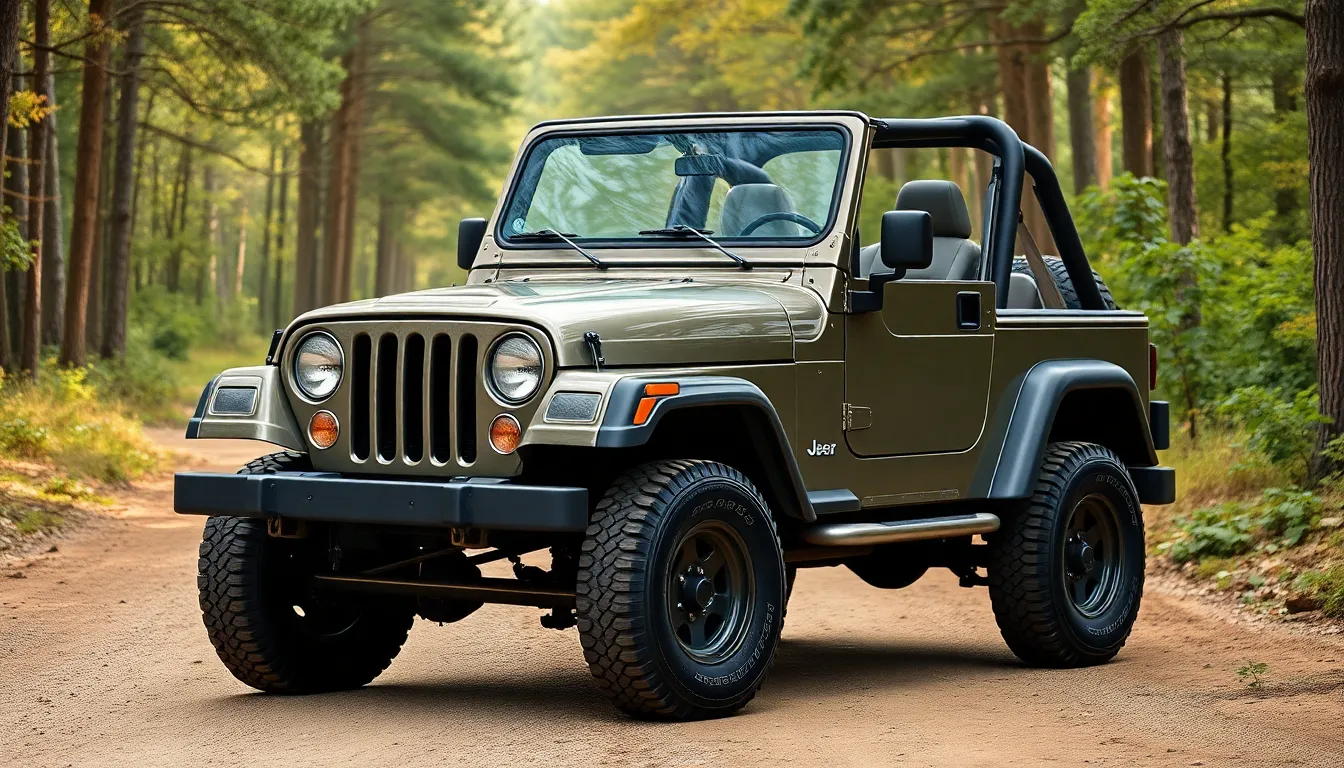
The Jeep Wrangler TJ showcases distinctive design elements that balance rugged functionality with modern aesthetics. These features create an unmistakable appearance that sets the TJ apart from other SUVs in its class.
Exterior Design Elements
Round headlights define the TJ’s front fascia and represent a return to classic Jeep styling after the YJ’s controversial square headlights. The seven slot grille maintains the traditional Jeep identity while incorporating subtle refinements for improved aerodynamics.
Body panels feature clean lines with minimal ornamentation, emphasizing the vehicle’s utilitarian purpose. Flared wheel wells accommodate larger tires while providing additional ground clearance for off road adventures.
Door hinges mount externally and allow complete door removal for open air driving experiences. The convertible soft top system includes a fold down rear window and removable side windows for maximum ventilation.
Chrome bumpers come standard on most trim levels and provide both protection and classic styling appeal. Rock rails protect the vehicle’s undercarriage during trail driving while serving as functional step points.
The spare tire mounts on the rear tailgate in traditional Jeep fashion, creating an iconic silhouette that enthusiasts recognize instantly. Tailgate design includes a swing out configuration with external hinges for durability and easy access.
Interior Layout and Comfort
Interior space maximizes functionality within the TJ’s compact dimensions through efficient design choices. Front bucket seats provide adequate support for daily driving while accommodating the upright seating position necessary for optimal visibility.
Dashboard layout features a straightforward instrument cluster with essential gauges including speedometer, tachometer, fuel level, and engine temperature. Control knobs for climate and radio systems use large, glove friendly designs that remain operable during off road activities.
Rear seating accommodates two passengers on a bench style seat with fold down capability for additional cargo space. Headroom measures approximately 40 inches for front passengers and 38 inches for rear occupants.
Storage answers include door panel pockets, center console compartments, and glove box space totaling roughly 15 cubic feet of interior storage. Cup holders integrate into the dashboard and center console areas for beverage security during rough terrain navigation.
Floor surfaces use durable rubber mats or optional carpet that withstand mud, sand, and water exposure common in outdoor adventures. Drain plugs in floor panels allow complete interior washdown when equipped with rubber flooring.
Engine Performance and Specifications
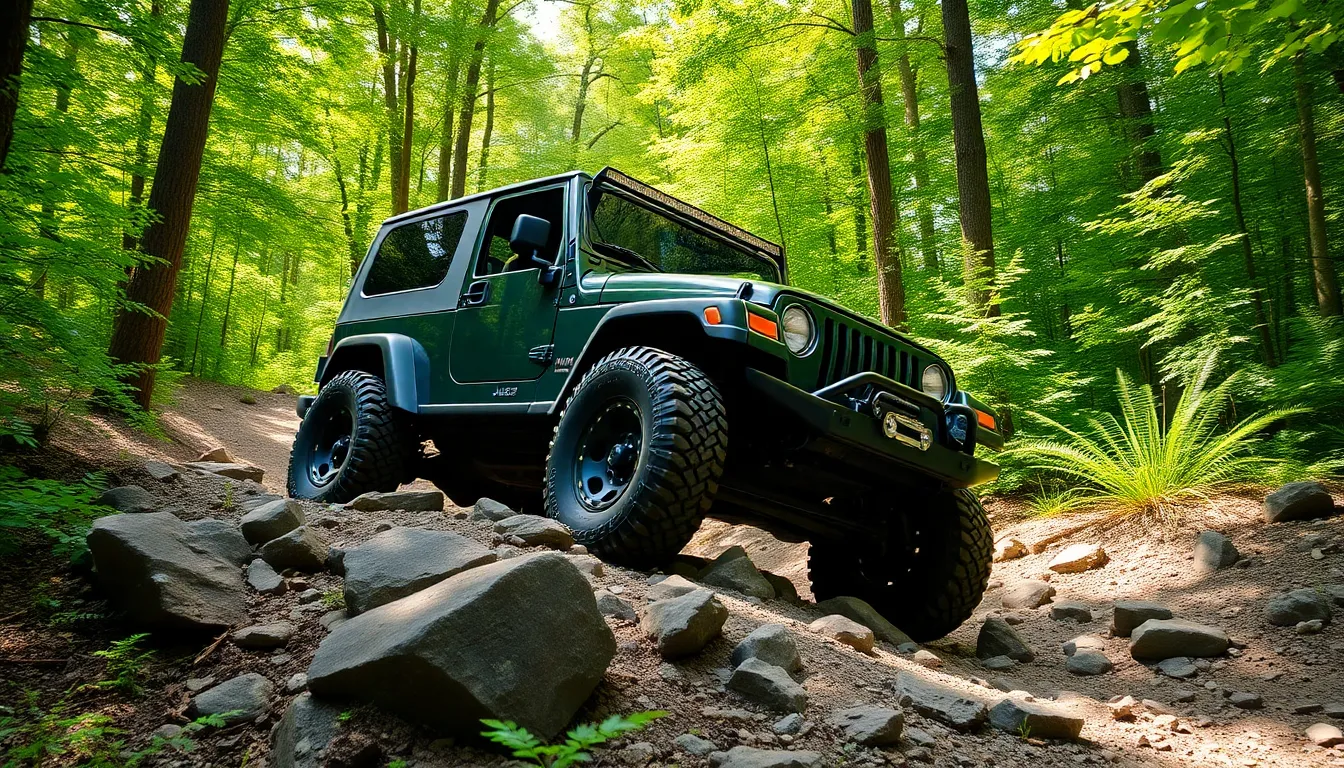
Engine performance remains a cornerstone of the Jeep Wrangler TJ’s enduring appeal among off-road enthusiasts. Understanding these powertrains helps owners maximize their TJ’s potential for both daily driving and trail adventures.
Available Engine Options
Base engine configurations for the TJ lineup offered distinct performance characteristics across different model years. From 1997 to 1999, Jeep equipped most TJ models with the 2.5-liter inline-four AMC 150 engine, producing 120 horsepower and 140 lb-ft of torque. This naturally aspirated powerplant delivered adequate performance for lighter off-road duties while maintaining reasonable fuel economy ratings of approximately 18 mpg city and 22 mpg highway.
Premium engine selection centered on the 4.0-liter inline-six AMC 242 engine, available throughout the TJ’s production run from 1997 to 2006. This legendary powerplant generated 190 horsepower and 235 lb-ft of torque in earlier models, with output increasing to 193 horsepower by 2003. Known for exceptional reliability and low-end torque delivery, the 4.0-liter engine became the preferred choice for serious off-road applications.
Special edition models like the Rubicon featured enhanced versions of the 4.0-liter engine with improved cooling systems and upgraded components. These modifications supported sustained performance during demanding trail conditions and rock crawling scenarios.
| Engine Option | Years Available | Horsepower | Torque | Fuel Economy (City/Highway) |
|---|---|---|---|---|
| 2.5L I4 AMC 150 | 1997-1999 | 120 hp | 140 lb-ft | 18/22 mpg |
| 4.0L I6 AMC 242 | 1997-2006 | 190-193 hp | 235 lb-ft | 15/19 mpg |
Transmission Choices
Manual transmission options provided direct control over power delivery and remained popular among TJ enthusiasts. The standard five-speed manual transmission, designated as the AX-15, came paired with the 4.0-liter engine through 1999. This robust gearbox featured synchronized gears and proved capable of handling moderate modifications and trail abuse.
Upgraded manual transmission systems arrived with the introduction of the NV3550 five-speed in 2000. This newer unit offered improved shift quality, enhanced durability ratings, and better integration with the TJ’s four-wheel-drive system. Gear ratios provided optimal spacing for both highway cruising and low-speed trail work.
Automatic transmission availability expanded TJ appeal to drivers preferring convenience over manual control. The three-speed 30RH automatic transmission served 2.5-liter engines, while the four-speed 42RLE automatic paired with 4.0-liter powerplants starting in 2003. These automatics featured electronic controls, adaptive shift patterns, and integrated tow/haul modes for enhanced versatility.
Four-wheel-drive transfer cases complemented both transmission types with robust Command-Trac and Rock-Trac systems. Standard Command-Trac units provided part-time four-wheel drive with 2.72:1 low-range gearing, while Rubicon models featured the advanced Rock-Trac system with 4:1 low-range ratios for extreme off-road situations.
Off-Road Capabilities and Features

The Wrangler TJ’s off-road prowess stems from engineering choices that prioritize traction and terrain navigation. These capabilities transform challenging outdoor adventures into manageable experiences.
Four-Wheel Drive System
Command-Trac transfer cases come standard on TJ models and deliver reliable four-wheel drive performance across varied terrain conditions. This system operates with a 2.72:1 low-range gear ratio that multiplies torque for steep climbs and technical obstacles. Part-time four-wheel drive configuration allows drivers to engage 4WD when traction demands increase while maintaining 2WD efficiency during normal driving conditions.
Rock-Trac systems equip Rubicon models with advanced off-road technology including a 4:1 low-range gear ratio. Electronic front and rear differential locks activate independently to maximize traction when wheels lose contact with the ground. Manual engagement switches located on the dashboard provide instant control over differential lock systems during challenging off-road situations.
Dana axles support both transfer case options with robust construction designed for repeated stress cycles. Front Dana 30 axles handle standard TJ applications while Dana 44 rear axles provide increased strength for heavy-duty use. Rubicon models feature Dana 44 axles front and rear for maximum durability during extreme off-road conditions.
Ground Clearance and Approach Angles
Stock TJ models maintain 8.5 inches of ground clearance measured at the lowest point between the axles. This clearance accommodates most trail obstacles including rocks, logs, and deep ruts without requiring vehicle modifications. Factory skid plates protect critical drivetrain components from impact damage during off-road navigation.
Approach angles reach 42 degrees on standard TJ configurations while departure angles measure 31 degrees for optimal obstacle negotiation. Short front and rear overhangs contribute to these favorable angles by reducing the likelihood of contact during steep ascents and descents. Rubicon models improve these specifications with enhanced bumper designs and optimized body angles.
| Specification | Standard TJ | Rubicon TJ |
|---|---|---|
| Ground Clearance | 8.5 inches | 9.7 inches |
| Approach Angle | 42 degrees | 44 degrees |
| Departure Angle | 31 degrees | 33 degrees |
| Breakover Angle | 25 degrees | 27 degrees |
Wheelbase length of 93.4 inches creates an optimal balance between stability and maneuverability on technical trails. This dimension allows the TJ to navigate tight switchbacks while maintaining wheel contact on uneven surfaces. Factory tire sizes of 30×9.50R15 provide adequate traction for most off-road scenarios without requiring suspension modifications.
Common Issues and Reliability
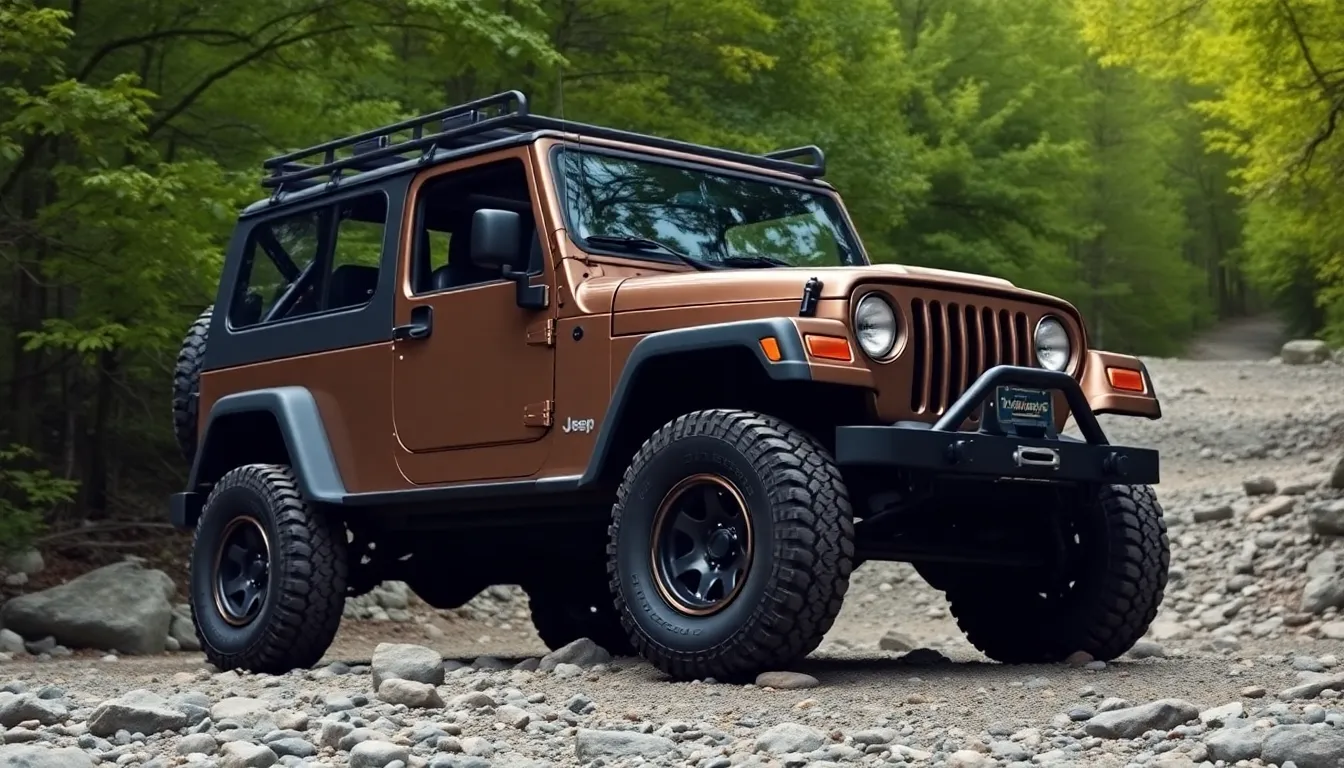
The Jeep Wrangler TJ’s reputation for reliability comes with exact maintenance considerations that owners encounter throughout ownership. Understanding these common problems helps TJ enthusiasts prepare for long-term ownership costs and maintenance schedules.
Known Mechanical Problems
Death wobble affects many TJ models between 45-65 mph when front suspension components wear beyond specification. Track bar bushings, ball joints, and tie rod ends typically cause this violent steering wheel shake that makes the vehicle difficult to control. Replacing worn suspension components eliminates this dangerous condition that costs $300-800 depending on parts replaced.
Exhaust manifold cracking occurs frequently on 4.0-liter engines due to repeated heating and cooling cycles. Cracked manifolds create ticking sounds during startup and reduce engine performance while increasing emissions. Replacement manifolds cost $150-400 plus labor, with aftermarket headers offering improved durability.
Transfer case chain stretch develops in high-mileage TJs, particularly those used extensively for off-roading. Stretched chains create grinding noises during shifts between 2WD and 4WD modes. Chain replacement requires transfer case removal and costs $500-1,200 depending on additional components needed.
Clockspring failure affects TJ models with airbags, causing horn and cruise control malfunctions. This component connects steering wheel controls to the vehicle’s electrical system through a coiled wire assembly. Replacement costs $100-250 and requires airbag system precautions during installation.
Rear main seal leakage creates oil spots under parked vehicles and indicates engine wear. Oil leaks from this seal location require transmission removal for repair access. Replacement costs $400-800 due to extensive labor requirements.
Maintenance Requirements
Oil changes occur every 3,000 miles for severe service conditions or 5,000 miles for normal driving patterns. The 4.0-liter engine requires 6 quarts of conventional or synthetic oil, while the 2.5-liter uses 4.5 quarts. Regular oil analysis helps identify internal engine wear patterns before major problems develop.
Coolant system maintenance includes radiator flushing every 30,000 miles and thermostat replacement at 60,000-mile intervals. TJ cooling systems hold approximately 10.5 quarts of antifreeze mixture and require exact formulations to prevent corrosion. Overheating damages cylinder heads and requires expensive repairs exceeding $2,000.
Transmission service intervals vary between manual and automatic units, with manual transmissions requiring gear oil changes every 30,000 miles. Automatic transmissions need filter and fluid replacement every 50,000 miles using ATF+4 specification fluid. Transfer cases require 75W-90 gear oil changes at similar intervals.
Differential maintenance includes gear oil replacement every 15,000 miles for severe off-road use or 30,000 miles for normal operation. Both front and rear differentials hold approximately 2.5 quarts of gear oil and develop leaks at pinion seals over time.
Brake system components require inspection every 12,000 miles with pad replacement typically needed every 25,000-40,000 miles. Brake fluid changes occur every two years regardless of mileage to prevent moisture contamination. TJ brake systems use DOT 3 brake fluid specification.
Modifications and Aftermarket Support
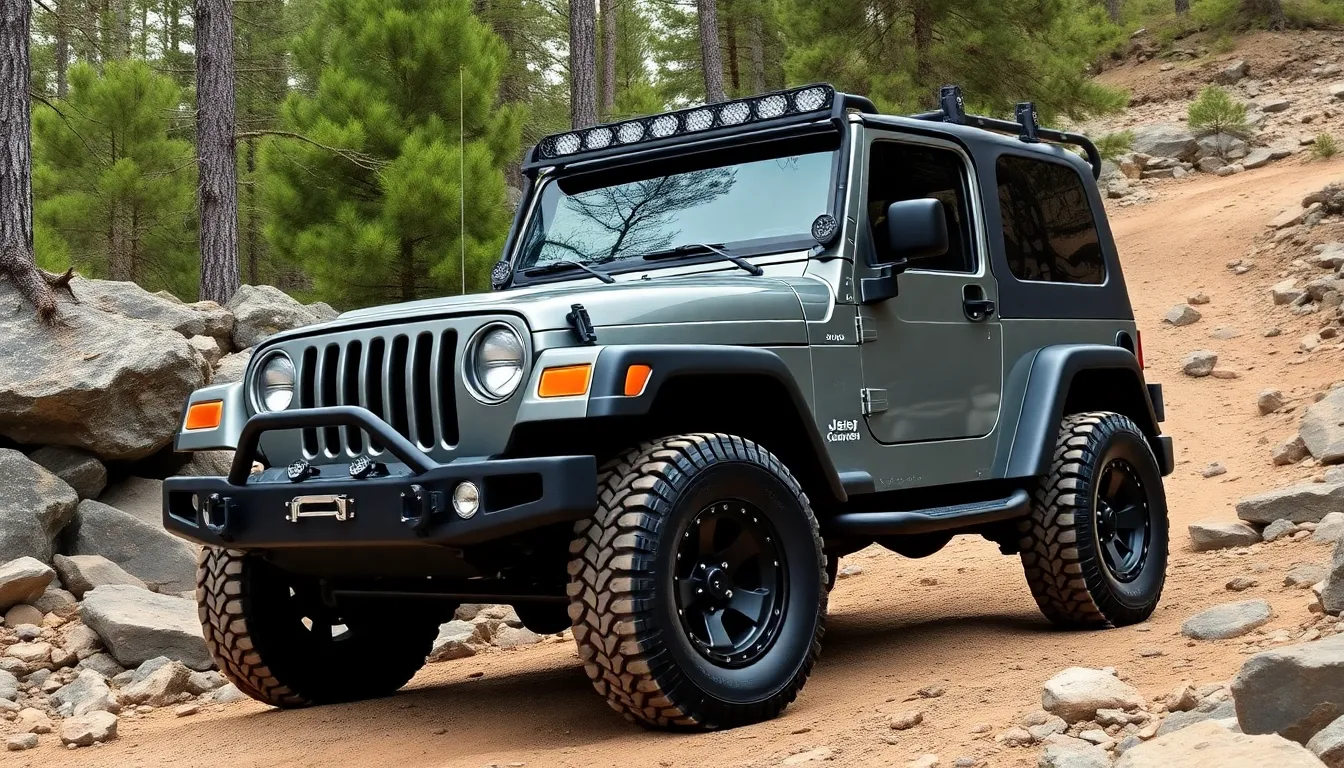
The Jeep Wrangler TJ enjoys exceptional aftermarket support with thousands of modification options available from manufacturers worldwide. This extensive network allows owners to customize their vehicles for exact purposes ranging from daily driving enhancements to extreme off-road performance.
Popular Upgrade Options
Lift kits represent the most common modification among TJ owners, with 2-inch to 4-inch suspension lifts providing improved ground clearance and larger tire compatibility. We find that companies like Rough Country, Rubicon Express, and TeraFlex offer comprehensive lift packages ranging from $400 for basic spacer lifts to $2,500 for premium long-arm systems.
Tire upgrades frequently accompany lift installations, with popular sizes including 31-inch, 33-inch, and 35-inch diameter options. Brands such as BFGoodrich All-Terrain T/A KO2, Falken Wildpeak AT3W, and General Grabber ATX dominate the TJ tire market due to their proven performance in various conditions.
Rock sliders and skid plates provide essential underbody protection during off-road adventures. Companies like Poison Spyder, Metalcloak, and Artec Industries manufacture bolt-on protection systems that guard against damage to the fuel tank, transmission, and transfer case without compromising ground clearance.
Bumper replacements offer both aesthetic appeal and functional improvements through integrated recovery points, winch mounts, and light brackets. Popular manufacturers include Warn, Smittybilt, and JCR Offroad, with prices ranging from $300 for basic designs to $1,200 for heavy-duty modular systems.
LED lighting upgrades enhance visibility during night driving and off-road excursions. Headlight conversions using products from brands like JW Speaker, Truck-Lite, and KC HiLiTES provide 3-5 times brighter illumination compared to factory halogen units.
Performance Enhancements
Cold air intake systems increase horsepower and torque while improving throttle response in both 2.5L and 4.0L engines. We recommend products from K&N, AEM, and Banks Power that typically add 5-15 horsepower while maintaining emissions compliance and warranty coverage.
Exhaust system upgrades reduce backpressure and create a more aggressive sound profile through cat-back and axle-back configurations. Borla, Magnaflow, and Gibson manufacture systems specifically designed for TJ applications, offering gains of 8-12 horsepower with improved fuel economy.
Throttle body spacers provide an affordable performance modification that improves air mixing and increases low-end torque. Companies like PowerAid and BBK produce aluminum spacers that install between the throttle body and intake manifold, typically adding 2-5 horsepower for under $100.
Regearing modifications optimize the drivetrain for larger tire sizes by changing differential gear ratios. We find that ratios between 4.10:1 and 4.88:1 work best for TJs running 33-inch to 35-inch tires, restoring factory-like acceleration and reducing engine strain during highway driving.
Supercharger kits offer the most important power gains for TJ owners seeking maximum performance. Systems from Magnuson and ProCharger can increase horsepower by 50-80% in 4.0L engines, though installation requires professional expertise and supporting modifications to fuel and cooling systems.
Buying Guide and Market Value
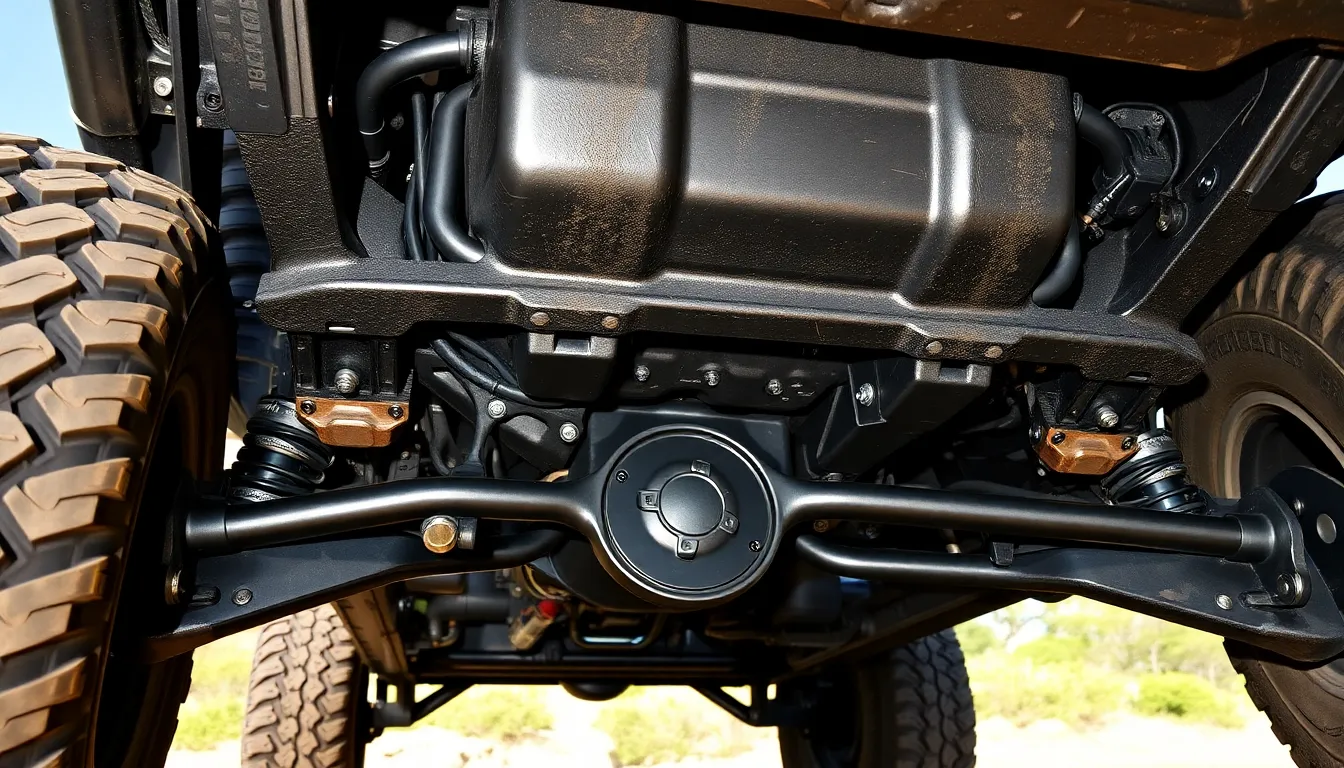
The TJ Wrangler’s enduring popularity drives strong resale values and creates a competitive used vehicle market. Understanding key inspection points and current pricing trends helps buyers make informed purchase decisions.
What to Look for When Purchasing
Frame inspection represents the most critical evaluation step when considering a TJ Wrangler purchase. Examine the frame rails, crossmembers, and mounting points for rust perforation or structural damage, particularly around the rear spring hangers and control arm mounts. Check underneath the vehicle for excessive corrosion that could compromise safety or require expensive repairs.
Death wobble symptoms indicate potential steering component wear that demands immediate attention. Test drive the TJ at highway speeds and feel for violent steering wheel oscillation between 45-55 mph. Inspect tie rod ends, track bar bushings, and ball joints for excessive play or wear patterns.
Engine assessment focuses on the 4.0-liter inline-six’s known vulnerabilities and maintenance history. Listen for exhaust manifold ticking sounds that signal cracked headers, a $400-800 repair depending on labor rates. Verify proper cooling system operation and check for signs of overheating damage or head gasket issues.
Transfer case chain stretch creates grinding noises during engagement and disengagement of four-wheel drive modes. Test both high and low range operation in a safe environment to confirm smooth shifting without binding or unusual sounds.
Electrical system evaluation covers clockspring functionality and gauge cluster operation. Test all electrical components including air conditioning, power windows (if equipped), and instrument panel warning lights to identify potential clockspring failures.
Maintenance records provide insight into previous owner care and upcoming service intervals. Look for documentation of regular oil changes, coolant system flushes, and differential service to gauge overall vehicle condition.
Current Market Prices
TJ Wrangler pricing varies significantly based on mileage, condition, and trim level across different model years. Base Sport models from 1997-2002 typically range from $8,000-15,000 for higher mileage examples, while well maintained units command $15,000-22,000.
| Model Year | Sport/SE Range | Sahara Range | Rubicon Range |
|---|---|---|---|
| 1997-1999 | $8,000-$18,000 | $12,000-$20,000 | N/A |
| 2000-2002 | $10,000-$20,000 | $14,000-$22,000 | N/A |
| 2003-2004 | $12,000-$22,000 | $16,000-$25,000 | $18,000-$28,000 |
| 2005-2006 | $15,000-$25,000 | $18,000-$28,000 | $20,000-$32,000 |
Rubicon models command premium pricing due to their advanced Rock-Trac transfer case and factory lockers. Clean examples from 2003-2006 sell between $20,000-32,000 depending on mileage and modifications. Sahara trim levels fall between Sport and Rubicon pricing with enhanced comfort features driving values $2,000-4,000 higher than comparable Sport models.
Mileage significantly impacts TJ valuations with sub-100,000 mile examples commanding substantial premiums. Vehicles exceeding 150,000 miles typically sell at the lower end of price ranges unless exceptional maintenance records justify higher asking prices.
Geographic location affects pricing with rust-free southern and western examples selling for $2,000-5,000 more than equivalent northeastern vehicles. Modified TJs may carry higher or lower values depending on quality and desirability of installed upgrades.
Conclusion
The Jeep Wrangler TJ stands as one of the most beloved off-road vehicles ever produced. Its combination of classic design heritage and modern engineering created a platform that continues to captivate enthusiasts nearly two decades after production ended.
We’ve seen how the TJ’s thoughtful engineering choices and robust construction translate into real-industry capability and reliability. From weekend trail adventures to daily commuting the TJ adapts seamlessly to various driving needs while maintaining its rugged character.
The strong aftermarket support and solid resale values make the TJ an excellent investment for those seeking authentic off-road performance. Whether you’re planning your first Wrangler purchase or considering an upgrade the TJ generation offers proven capability that’s stood the test of time.
Frequently Asked Questions
What years was the Jeep Wrangler TJ produced?
The Jeep Wrangler TJ was produced from 1997 to 2006, representing a 10-year production run. Manufacturing began in April 1996 at the Toledo North Assembly Plant, with approximately 640,000 TJ Wranglers produced during this period, reflecting strong market demand and consistent quality throughout its generation.
What engines were available in the TJ Wrangler?
The TJ offered two main engine options: a 2.5-liter inline-four base engine producing 120 horsepower, and a premium 4.0-liter inline-six engine generating up to 193 horsepower. The 4.0L engine was particularly known for its reliability and torque output, making it the preferred choice among enthusiasts.
What are common problems with the Jeep Wrangler TJ?
Common TJ issues include death wobble (steering vibration), exhaust manifold cracking, transfer case chain stretch, clockspring failure affecting airbag and cruise control, and rear main seal leakage. Understanding these potential problems is crucial for maintenance planning and long-term ownership costs.
What four-wheel drive systems does the TJ have?
The TJ features two 4WD systems: the standard Command-Trac transfer case for reliable four-wheel drive performance, and the advanced Rock-Trac system found in Rubicon models. The Rock-Trac system includes electronic differential locks for maximum traction in challenging off-road conditions.
How much is a Jeep Wrangler TJ worth today?
TJ values vary significantly based on mileage, condition, and trim level. The strong aftermarket support and enduring popularity drive robust resale values, creating a competitive used vehicle market. Rubicon models typically command premium pricing due to their advanced off-road features and desirability among enthusiasts.
What makes the TJ different from other Wrangler generations?
The TJ marked a significant evolution by reintroducing iconic round headlights after the YJ’s rectangular ones. It featured a complete redesign with coil spring suspension, improved interior space, enhanced safety features, and modern fuel injection systems while maintaining traditional Jeep heritage and off-road capability.
What transmission options were available in the TJ?
The TJ offered two transmission choices to cater to different driver preferences: a five-speed manual transmission for those who preferred direct control, and a four-speed automatic transmission for easier daily driving and stop-and-go traffic situations.
Is the TJ Wrangler good for daily driving?
Yes, the TJ combines rugged off-road capability with practical daily driving features. It offers improved interior space, enhanced safety features, and modern engineering compared to earlier generations, making it suitable for both weekend adventures and everyday commuting needs.
What should I look for when buying a used TJ?
Key inspection points include checking frame integrity for rust or damage, testing for death wobble symptoms during driving, assessing engine condition and maintenance history, evaluating transfer case functionality, and inspecting electrical systems. Professional inspection is recommended for high-mileage or modified vehicles.
What aftermarket modifications are popular for the TJ?
Popular TJ modifications include lift kits for improved ground clearance, larger tire upgrades, protective features like rock sliders and skid plates, performance enhancements such as cold air intakes and exhaust upgrades, differential regearing for larger tires, and supercharger kits for maximum power gains.

